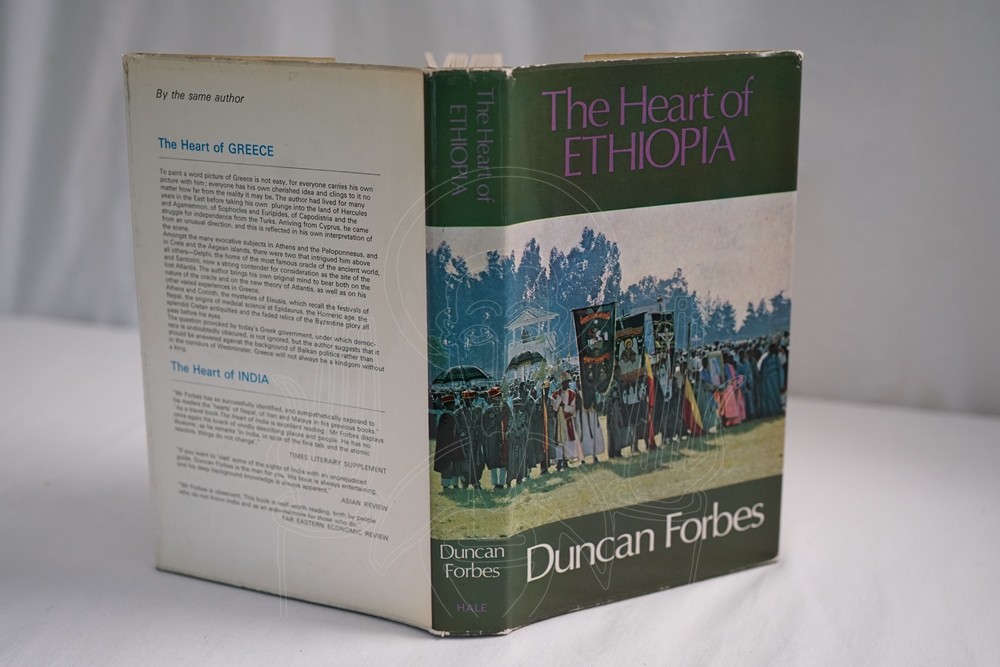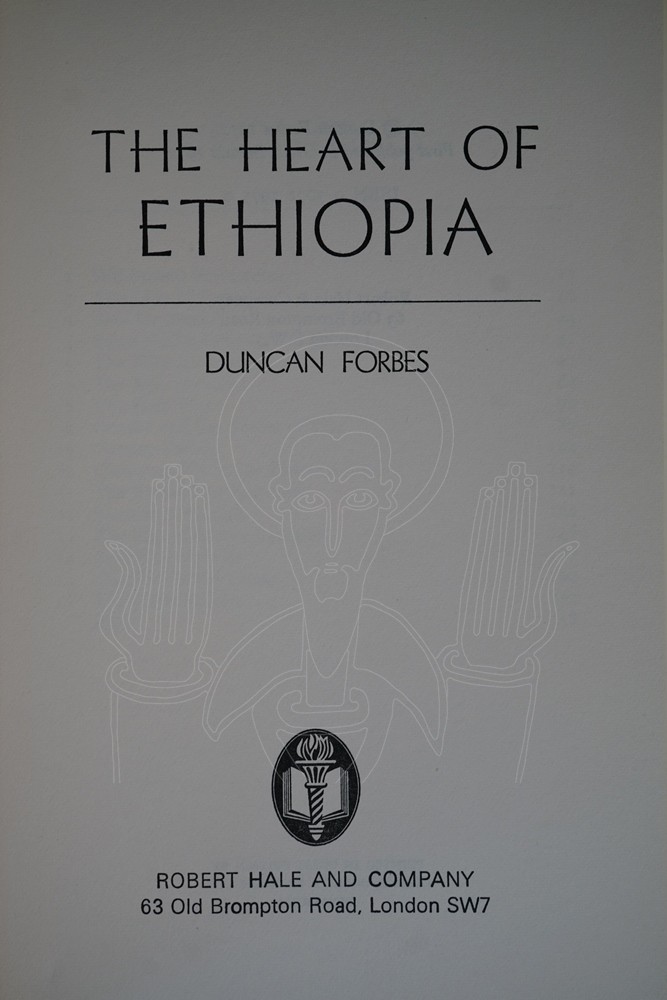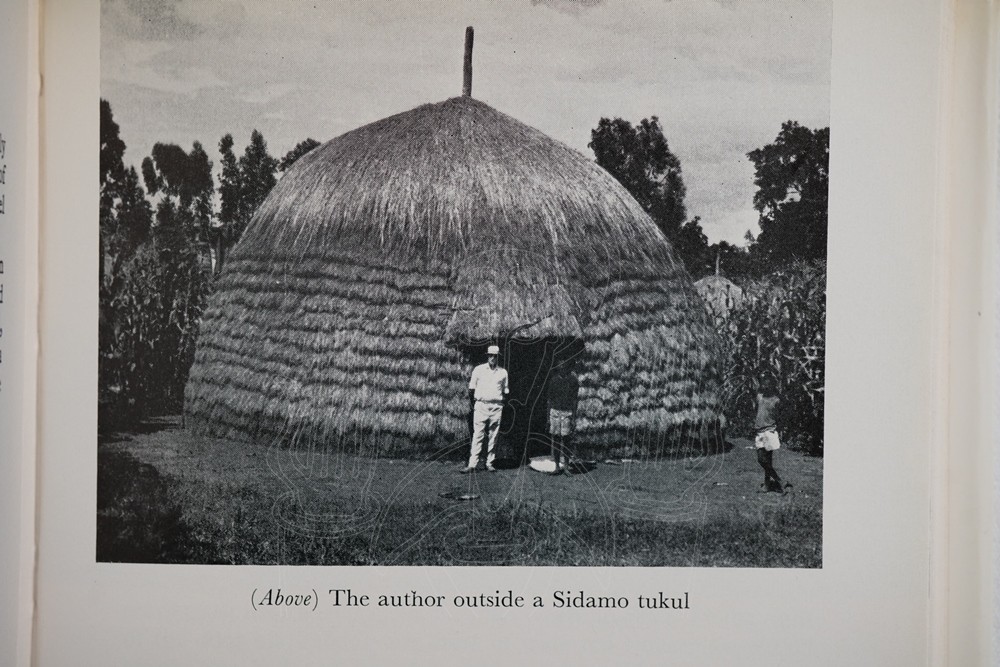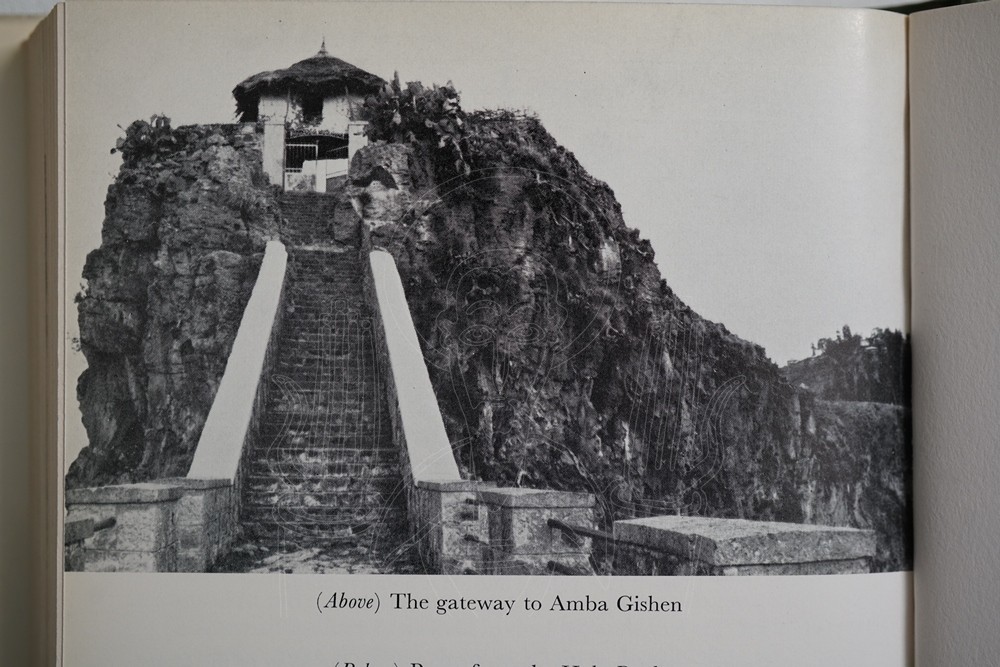Informations complémentaires
| Auteur | |
|---|---|
| Titre | |
| Éditeur | |
| Lieu d'édition | |
| Année d'édition | |
| Description | |
| Réf. Biblethiophile | |
| Réf. Pankhurst Partie | |
| Réf. Pankhurst Page | |
| Première entrée | |
| Sortie définitive |
↗ 1960 ↘ ?
| Auteur | |
|---|---|
| Titre | |
| Éditeur | |
| Lieu d'édition | |
| Année d'édition | |
| Description | |
| Réf. Biblethiophile | |
| Réf. Pankhurst Partie | |
| Réf. Pankhurst Page | |
| Première entrée | |
| Sortie définitive |
Great Britain, refuge of exiled monarchs, has had a special relationship with Ethiopia ever since the Emperor boarded a French destroyer at Djibouti in 1936 en route for Bath. And it was Winston Churchill, in spite of his private views concerning the tyranny of the Rases, who put the Emperor back on his throne on the fall of the Italian East African empire in 1941, a fact still acknowledged today in the name of Addis Ababa’s main thoroughfare, Churchill Street. That same monarch is now 79 years old, and although the capital shows off its veneer of modern avenues and buildings, the fabric of government has hardly changed since his return. When it does, the change will be a violent one.
A wildly beautiful country, embracing the hard-boiled highlanders of the great plateau and the equally tough lowlanders of the desert plains, the proudly Christian Amharas and the staunchly Moslem peoples and pagan tribes that surround them, Ethiopia can show every stage in man’s development from the stone age through feudalism to bureaucratic centralism. Though freedom of speech is, in practice, denied to her citizens, freedom of spirit can still be found in the vast unfenced spaces, in the natural marvels of the Nile gorge and falls, in the contemplation of ancient splendour at Axum, Lalibela and Gondar and in the traditional rustic hospitality of the highland tukuls.
In this book the author has tried to take the reader with him through this superficially peaceful but fundamentally turbulent country and share with him some of his experiences. The reader would not be overcautious to come armed.
Source: 1er rabat de jaquette
Born in Croydon, Surrey, in 1921, Duncan Forbes, a doctor’s son, was educated at Bryanston.
During the phoney war he began a degree course at Peterhouse, Cambridge, but gave it up to join the Indian Army. On returning to England in 1946 he was able to resume his studies and eventually took a B.A. honours degree in modern languages. On the basis of several stories and a three-act play he was offered an Atlantic Award, but the mounting responsibilities of family life reluctantly forced him to decline. After working on the magazines Vogue, House and Garden and then for a short spell with Business Publications he rejoined the Army, this time the Royal Army Educational Corps, serving or travelling in Korea, Japan, Hong Kong, Singapore, Malaya, Iran, Turkey, Nepal and Germany. His official work during this period included managing the Gurkha newspaper Parbate and subsequently the writing and publication of history and geography books in Nepali for the use of Gurkha children. A complete set of these books was later presented to the King of Nepal. In addition he found time to compile a very successful Malay/English dictionary. He was one of the contributors to the Reader’s Digest Book of World Travel in 1967, and in January 1968 his three-act play Katherine. based on the novel of the same name by Anya Seton, had its premiere at Eltham Palace. On retiring from the Army in 1969 he went to Ethiopia on a two-year assignment as English Language Teaching Adviser to the Imperial Ethiopian Ministry of Education and Fine Arts. It was partly the extensive travelling required by this appointment that enabled him to cover the country so completely.
Jacket photograph: Timkat banners in Addis Ababa by the author.
Source: 2ème rabat de jaquette



